

Continued from the second page of the Tuscany report
The reason we went to Tuscany for the weekend was to visit the Siena Cathedral, known in Italian as Il Duomo di Siena. (Siena is map point 26.) The exterior of the Duomo is impressive. Proof we were there (and all you got is this lousy webpage):
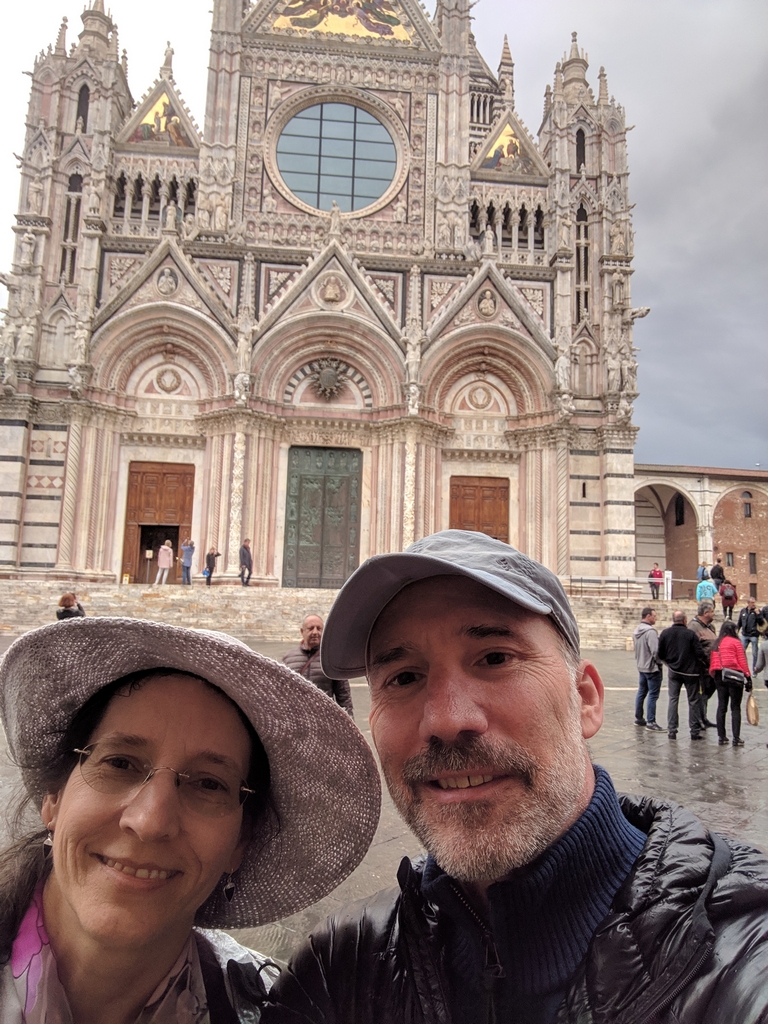
(That is Francesco in the background.) You can see that it was a wet and cloudy day. Regardless, the building is still a wonder to look at. Here is a closer view at the top of the Duomo.
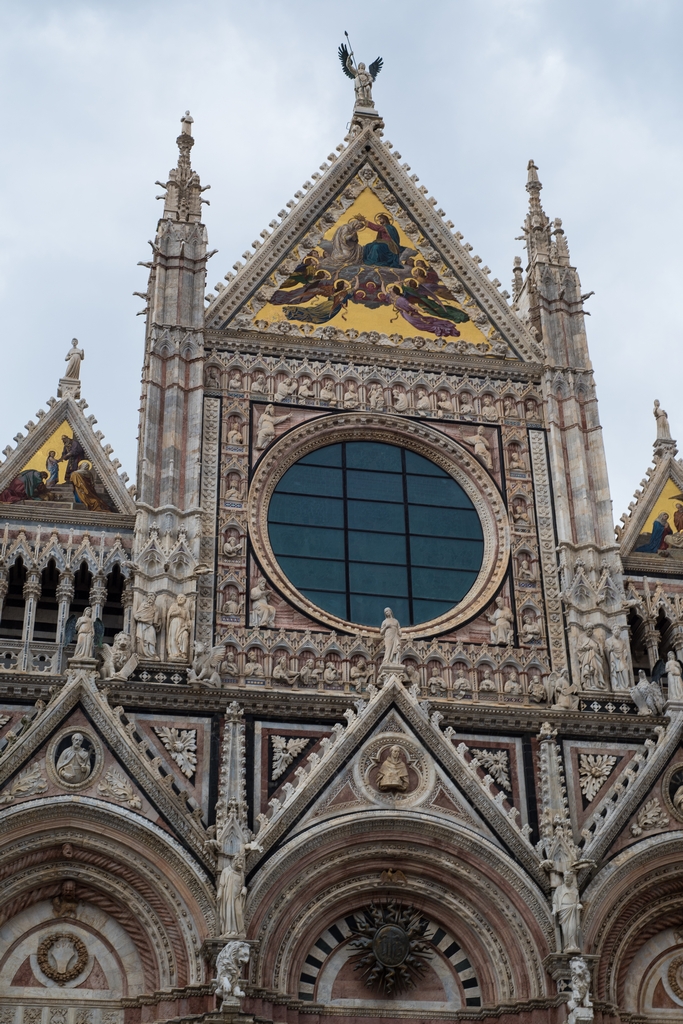
We took this video after the tours. It gives a nice view of the front and side of the Duomo. (Duomo exterior, 1 minute)
The Duomo is famous for the floor. What is so special about a floor? We are glad you asked. But first, we got an even closer view of the top of the cathedral with our first tour: the Duomo attic. We went up a long flight of stairs and into an attic area. There were a few displays for us. First, this panel with the tools used to create this cathedral. All were simple hand tools. With picks and awls - and lots of muscle and skill - this magnificent building was made.
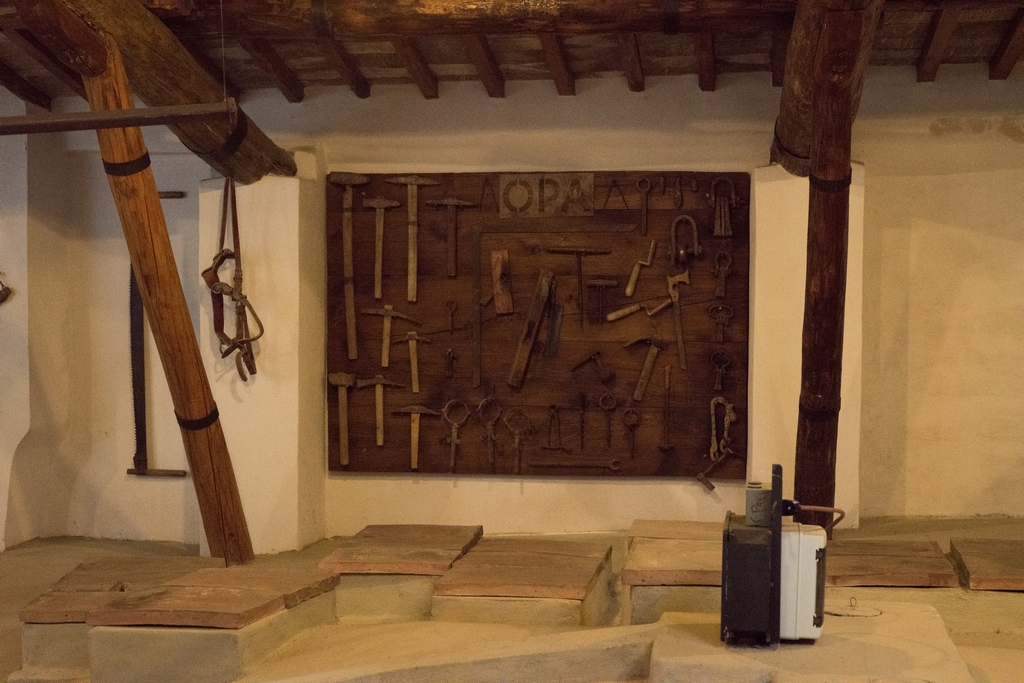
Some examples of wood and the many sizes of nails:
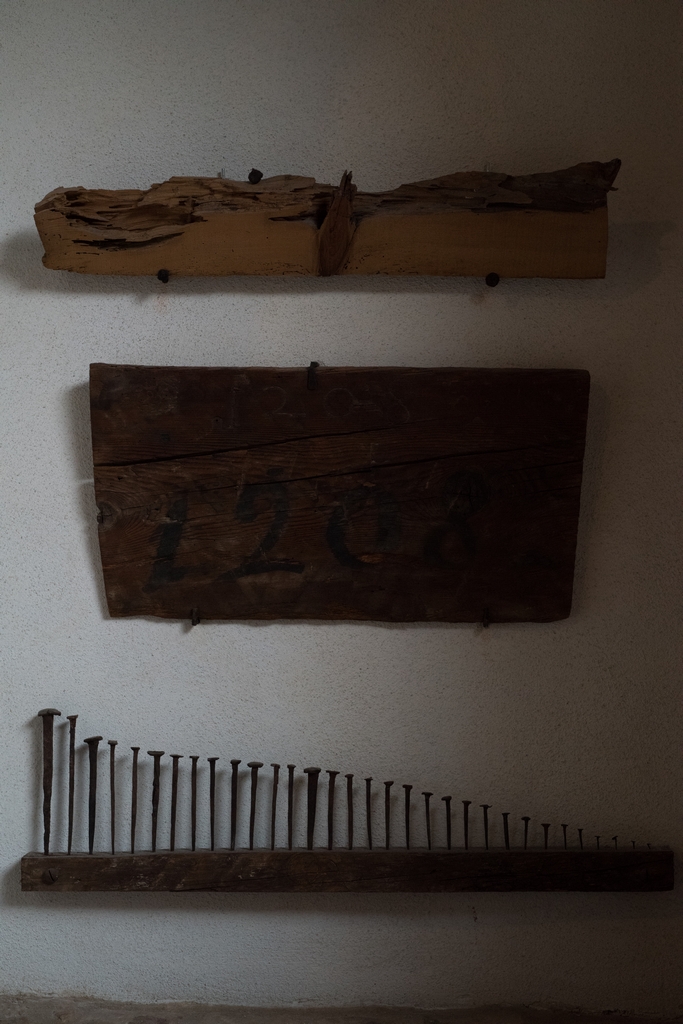
And magnificently colored marbles used in the Duomo:
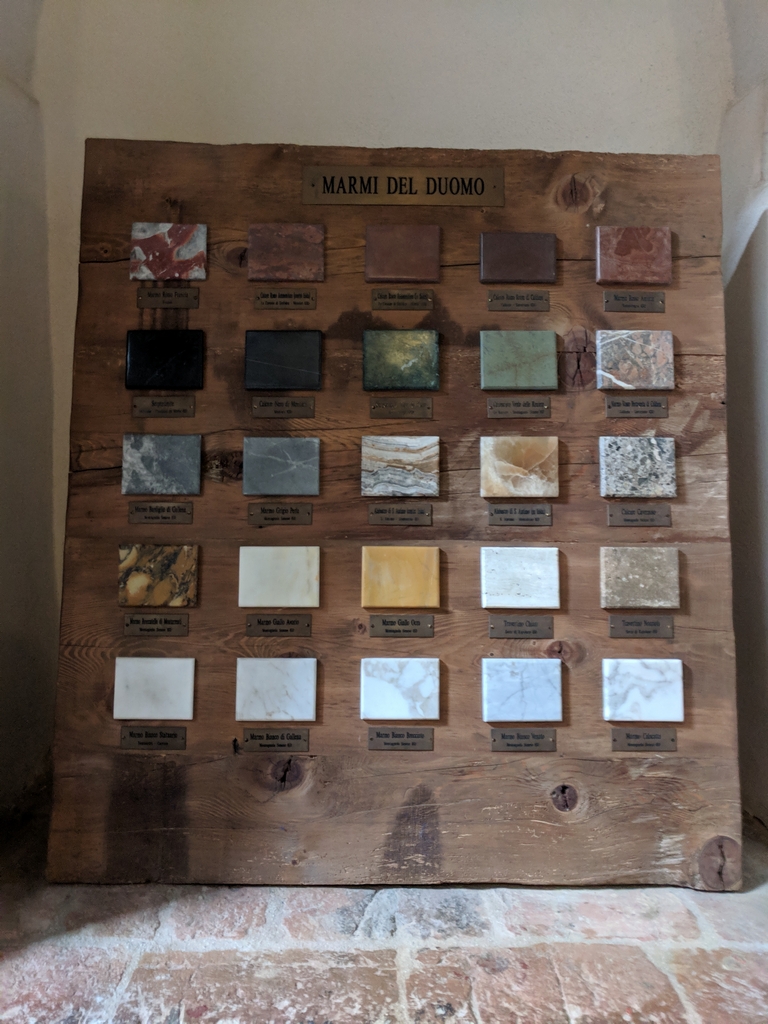
This video from the attic shows some of the tools, and you can hear the tour guide telling us (in Italian and English) about the stone used. (54 seconds)
In this picture, you can get a little preview of the magnificent cathedral floor:
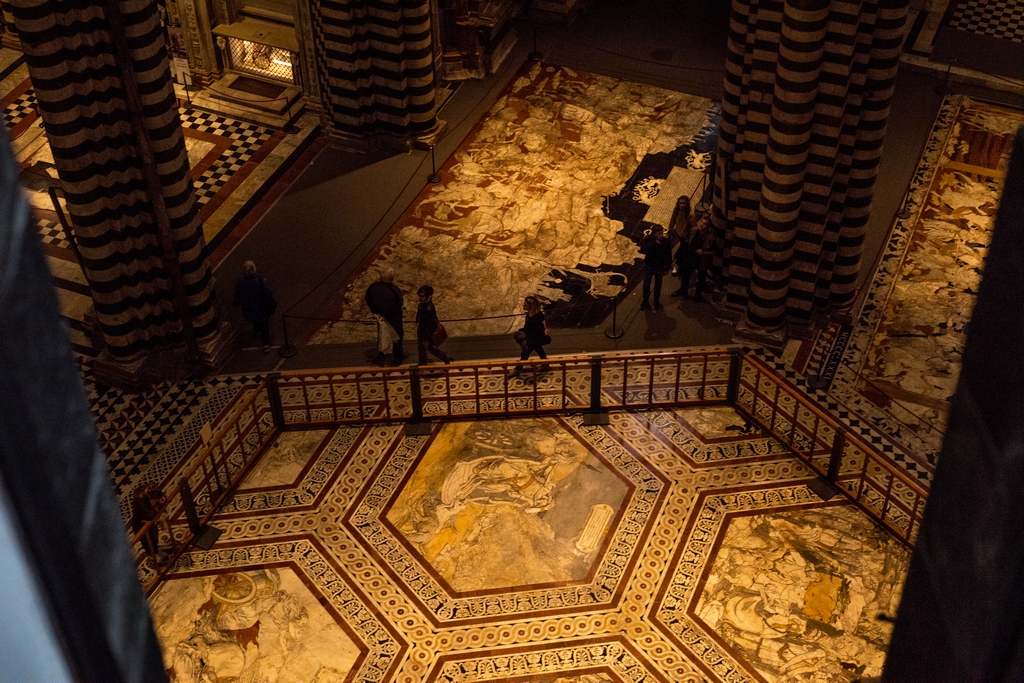
From the attic, we went outside. We actually went up a flight of stairs to get outside from the attic. So obviously we are high above the city. In this next picture, you can see the Mangia Tower (Torre del Mangia - the link is to an interesting and short Wikipedia entry), which faces Piazza del Campo (Campo Square). We went there later in the day.
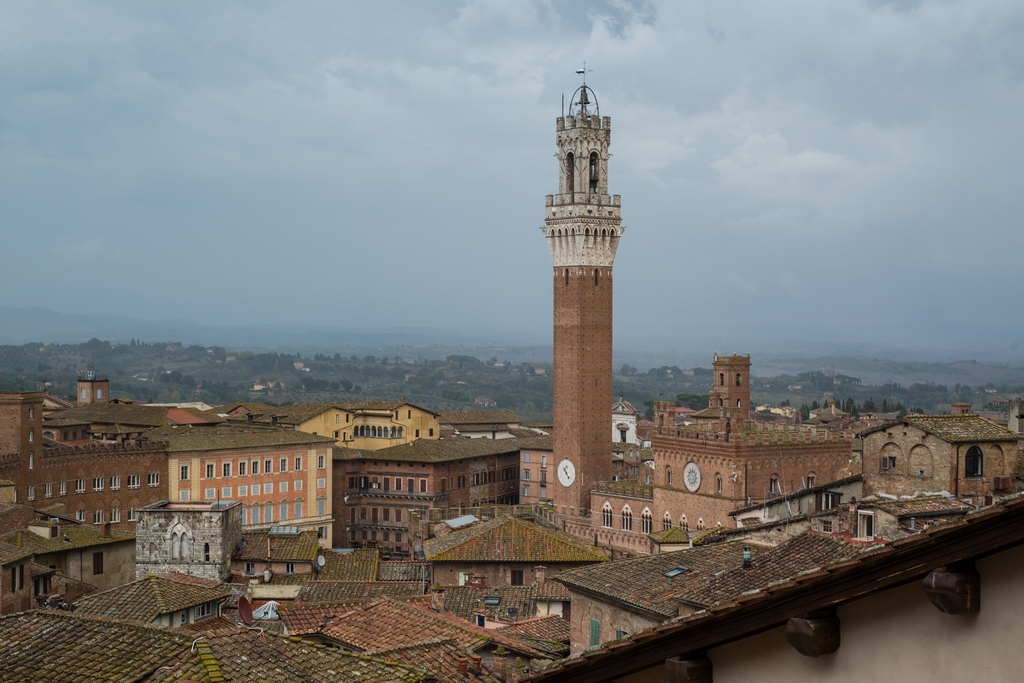
And looking out a different direction, looking at Basilica Cateriniana di San Domenico (which we didn't have time to visit):
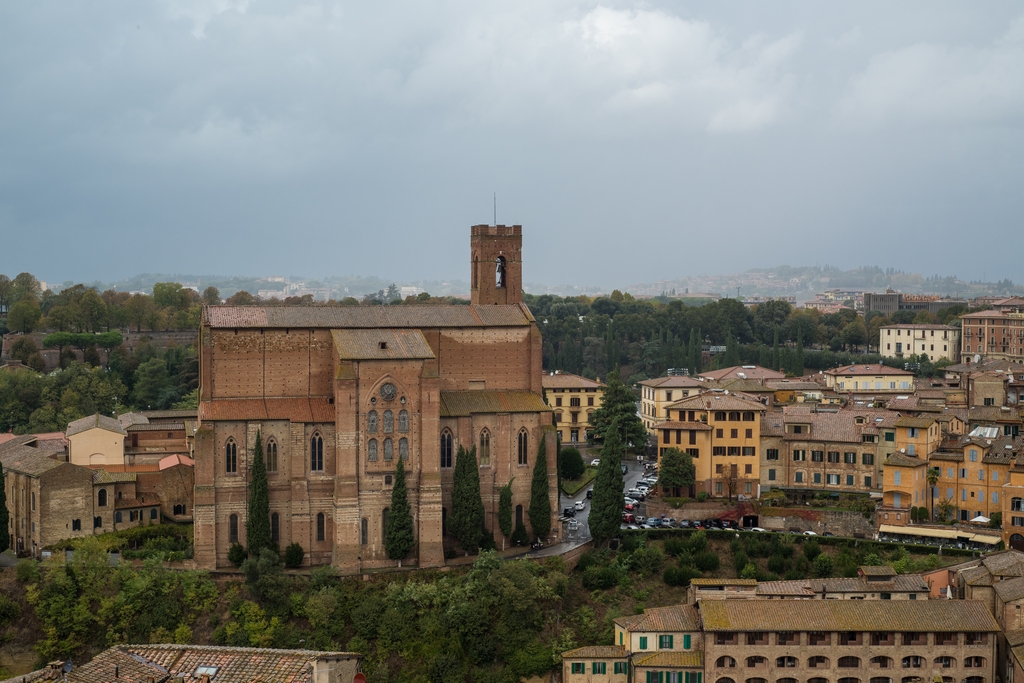
The Duomo's bell tower continues much higher that the exterior of the dome where we were. It has beautiful black and white marble.
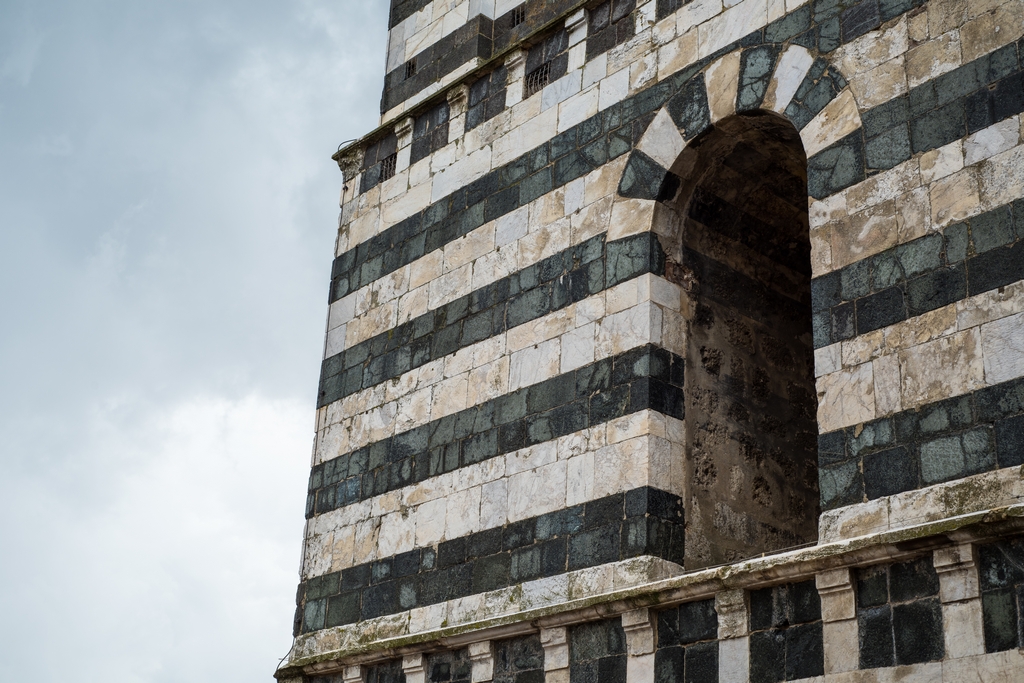
In this short video you can see some of the hand-made terracotta shingles, and a view up the tower. (14 seconds)
Anne is the world's worst selfie taker, but she gave it a try with Doni and Francesco.
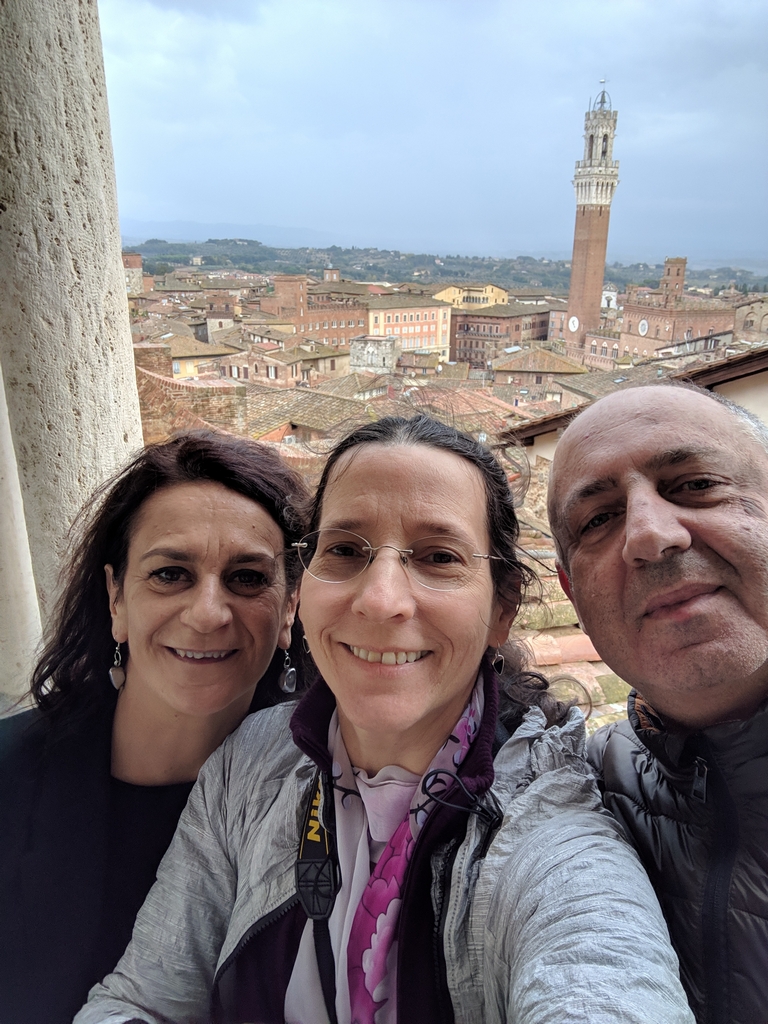
Pigeons checking out the surroundings:
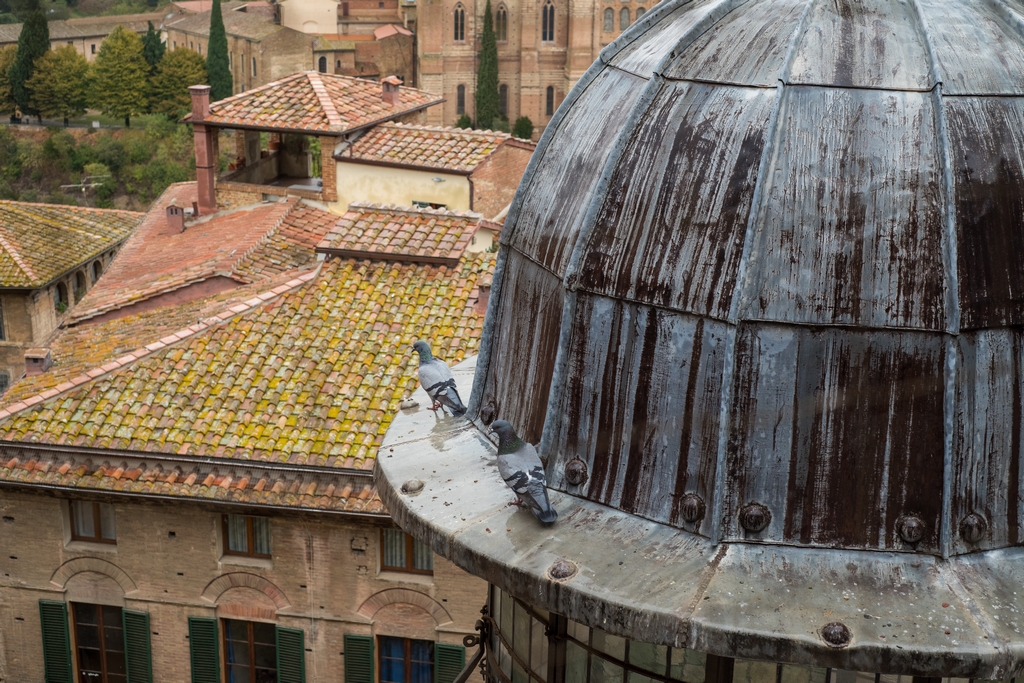
There was netting in some spots to contain the tourists.
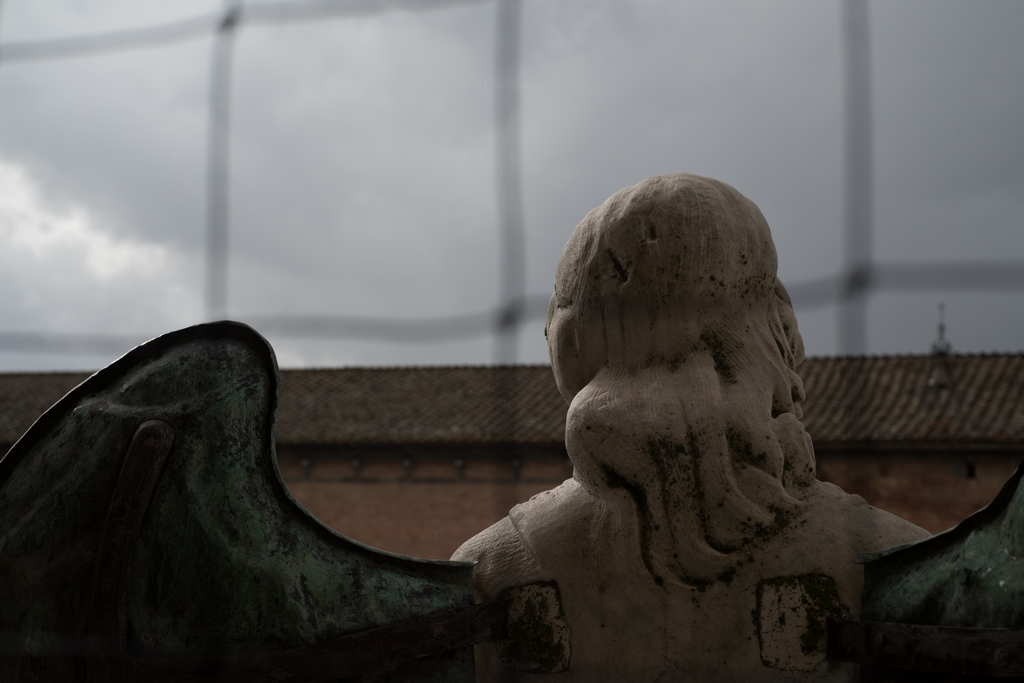
A walk across the front gave a nice view down the center of the Duomo di Siena.
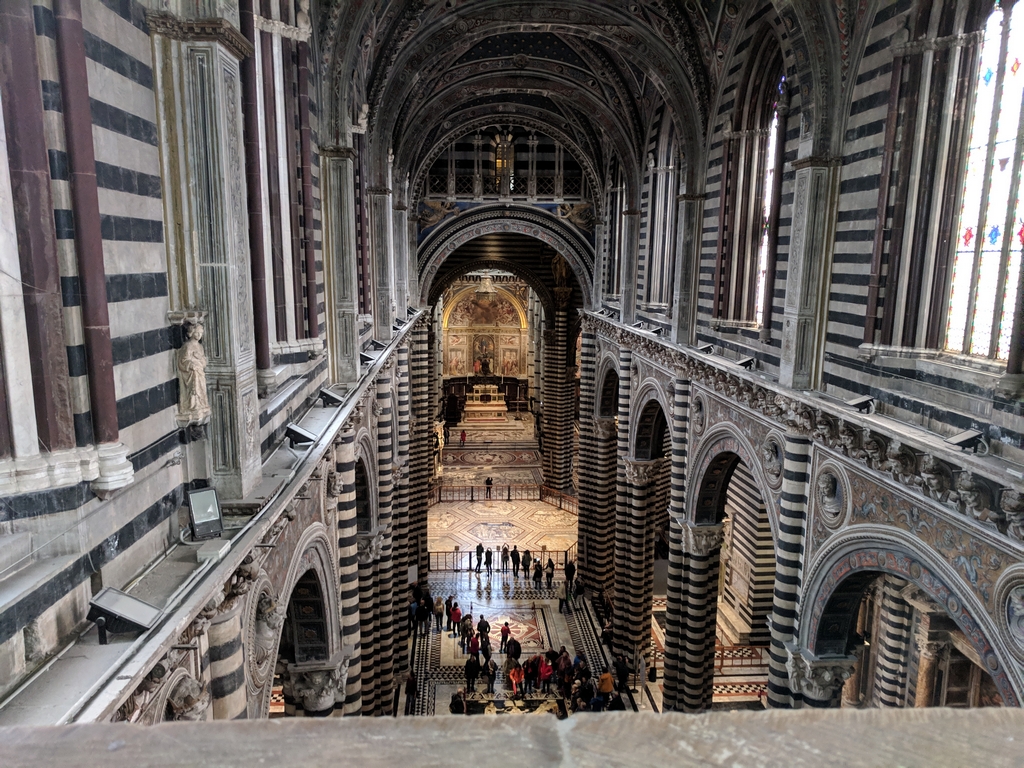
A quick video from a different spot on the attic tour, with a view from high above the floor. (7 seconds)
Then we walked back down to the ground floor.
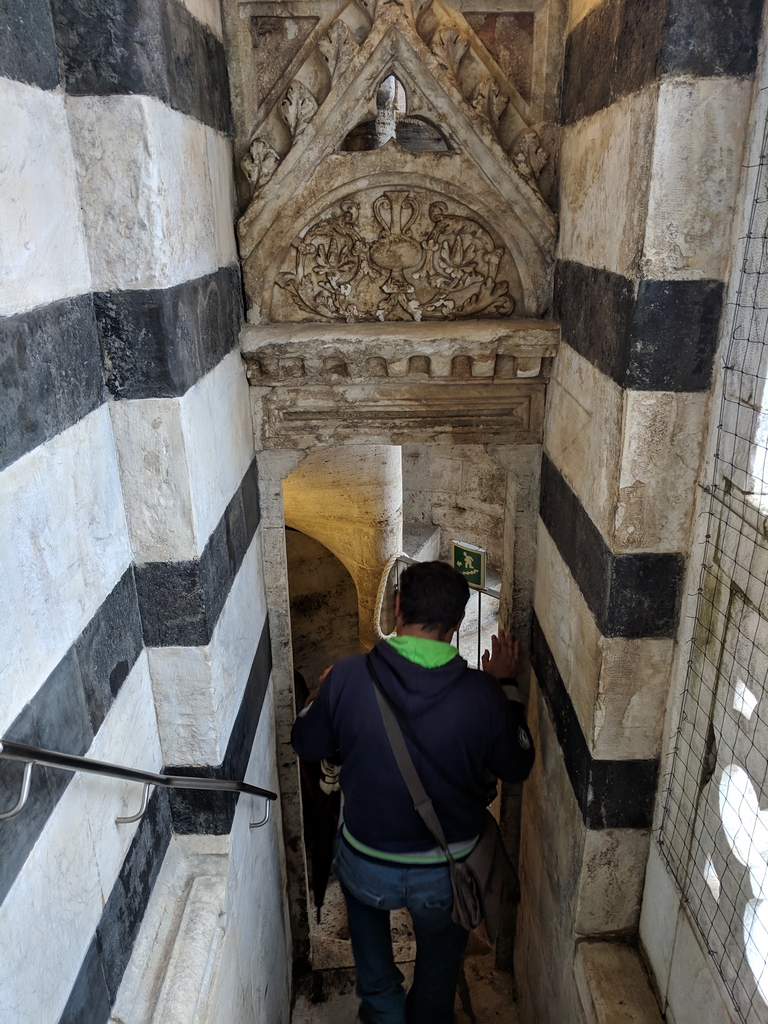
This next video is simply of walking down the stairs. You can hear someone saying "giro, giro" in Italian ("around and around"). (22 seconds)
After our attic tour, we immediately had our tour of the main Cathedral floor. Everyone else in the tour group spoke Italian. So the guide would give the long talk in Italian, then give us a short summary in English. This worked really well. As mentioned above, the floor of the Duomo is an attraction itself. As Wikipedia states, "The inlaid marble mosaic floor is one of the most ornate of its kind in Italy, covering the whole floor of the cathedral. This undertaking went on from the 14th to the 16th centuries, and about forty artists made their contribution. ... They represent the sibyls, scenes from the Old Testament, allegories and virtues. Most are still in their original state. The earliest scenes were made by a graffito technique: drilling tiny holes and scratching lines in the marble and filling these with bitumen or mineral pitch. In a later stage black, white, green, red and blue marble intarsia were used."
When you first enter, this is what you see:
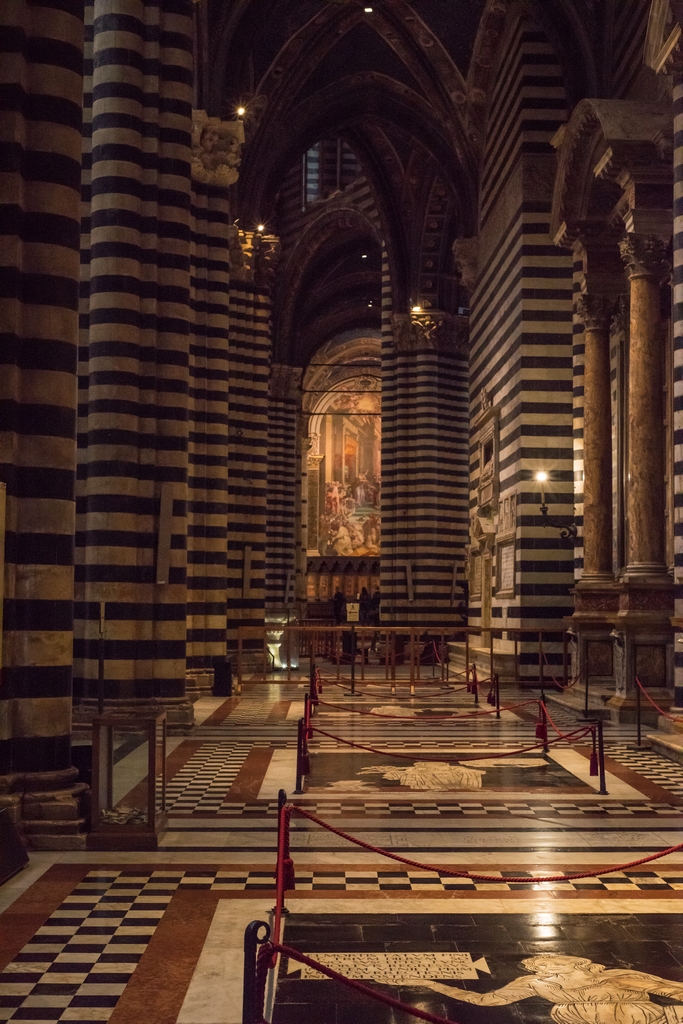
You can see the striking black and white striped structure, and some of the floor mosaics. The video below is taken from a bit to the left of where the above photo was taken. It gives a nice view down the length of the Duomo. At the end of the video, you can see Anne's hat in the umbrella rack. (Duomo's main floor 38 seconds)
This next picture is one of the older floor designs, done mostly in the 'graffito' style and in a well-trafficked area.
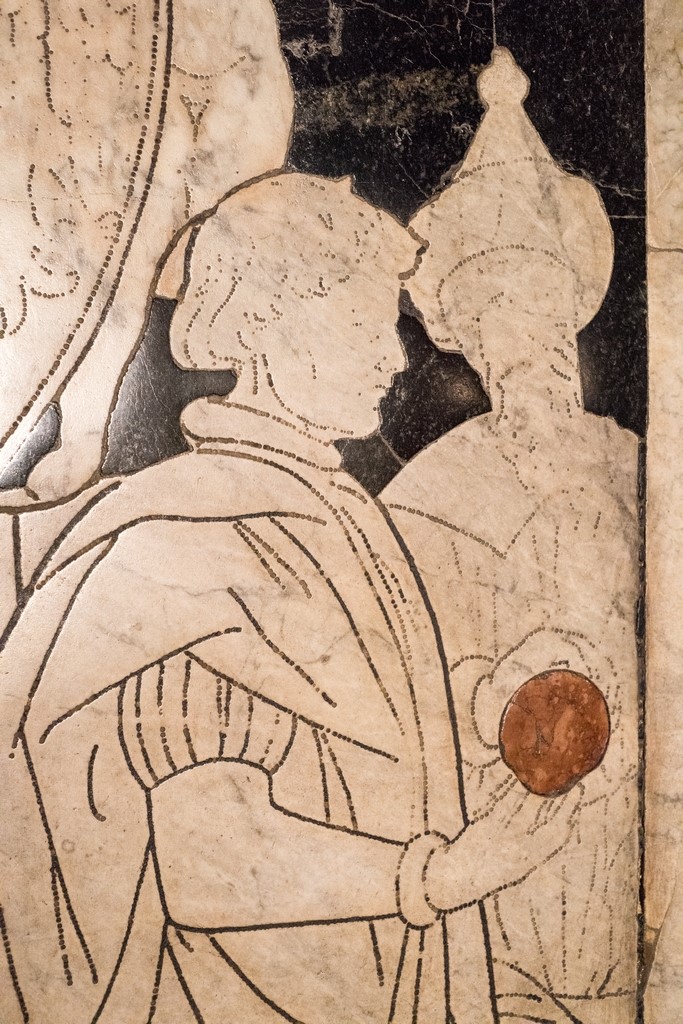
Much of the floor is covered most of the year, to protect it. The picture above gives a good indication of why they do this. But for about 3 months during the year (at 2 different times), the entire floor is uncovered for viewing. Doni knew that when we were coincided with the floor being open for viewing, which prompted our visit.
This next photograph is a detail of the mosaic immediately in front of the main entrance (which we didn't actually go through). It depicts Hermes Trismegistus, founder of Human wisdom. This marble inlay was made by Giovanni di Stefano in 1488 (per the Duomo website).
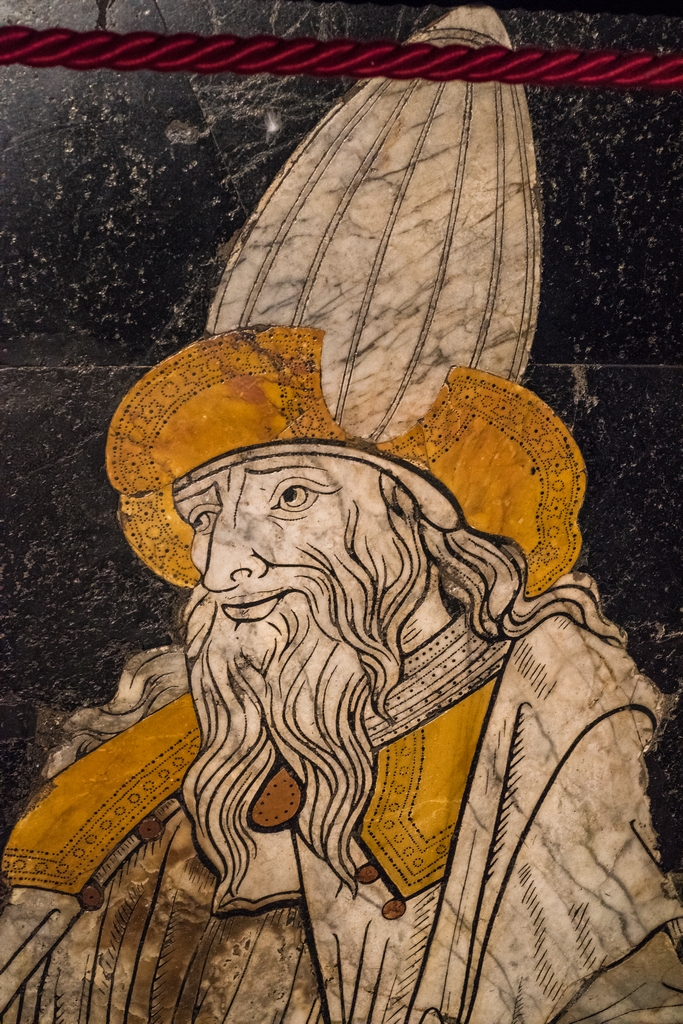
You can see in the above picture that they are using different colors of marble to create the scene. Note that there is no paint anywhere in these floor designs.
One of the very detailed mosaics was designs by Pinturicchio, and is called 'Allegory of the Mount of Wisdom'. This one dates from 1506, 18 years later than the 'Trismegistus'. In it, Crates of Thebes is throwing his wealth into the sea. Remember the display of marble colors that we saw in the attic? Now you can see how some of those were used.
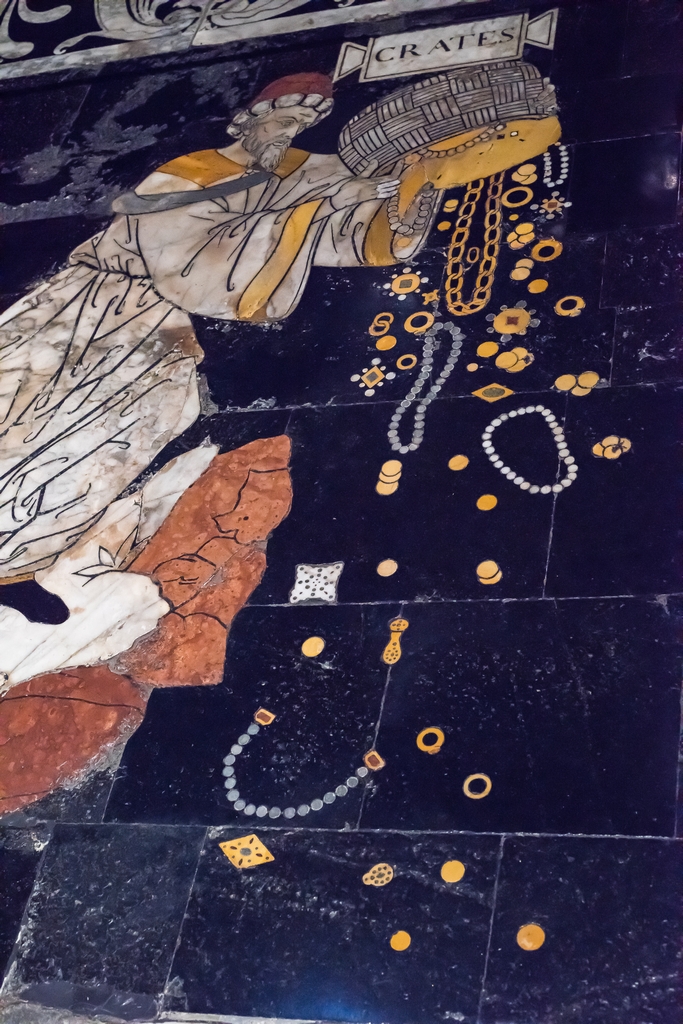
The most disturbing of the mosaics is Matteo di Giovanni's 'Slaughter of the Innocents'. It is the only New Testament scene. Paul took a video showing the mosaic, which is very large. (44 seconds)
Please continue to the fourth and last page of the Tuscany section of our Italy trip report.
Updated July 2020